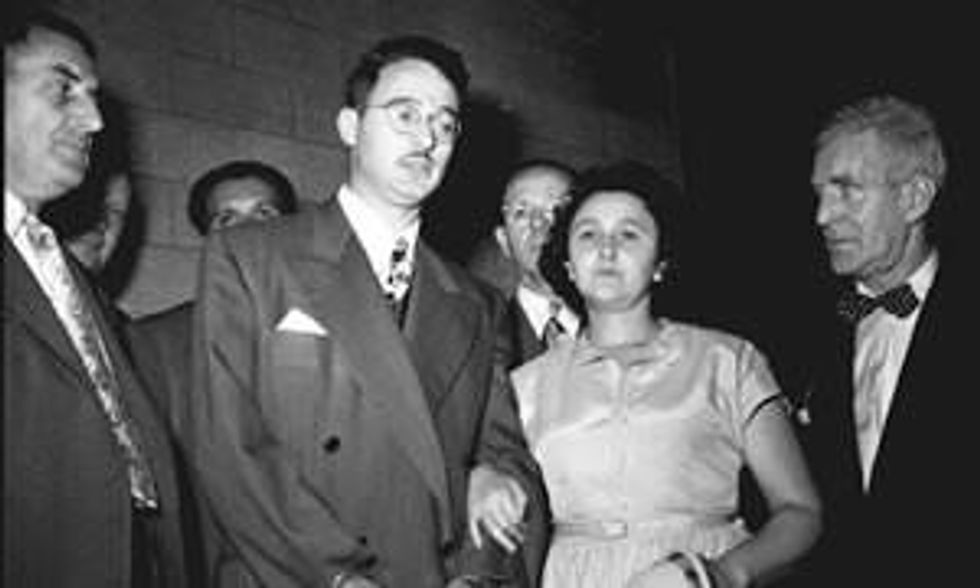While much attention is paid to the 34 US states that still administer the death penalty, federal and military systems of executions also exist. The retention of the US federal death penalty undermines those states that have abolished capital punishment - and federal executions undermine Washington's claims of world leadership in human rights.
Historically, perhaps the most well-known federal executions were of Julius and Ethel Rosenberg in New York. The Rosenbergs were convicted of Soviet espionage and electrocuted in 1953, at a time of anti-communist hysteria, amid charges of prosecutorial and judicial misconduct and a climate of antisemitism.
In 1972, the US supreme court in Furman v Georgia imposed an execution moratorium. The federal death penalty was reinstated, however, with the 1988 Anti-Drug Abuse Act, and has expanded since 1994 with the "wars" on drugs and terrorism. The federal penalty, unlike state versions, encompasses 60 crimes beyond first-degree murder, including drug-trafficking and terrorism. This expansion makes nearly all of the 16,000 murders committed in the nation each year death-eligible, according to Death Penalty Focus. The Death Penalty Information Center reports that 69 defendants have received a federal death sentence since 1988, including three executions and eight sentences removed.
Timothy McVeigh was executed by lethal injection in 2001 for his role in the 1995 Oklahoma City bombing, which killed 168 people. That year, condemned dug trafficker Juan Raul Garza was the first person executed under the 1988 act. The most recent federal execution, in 2003, was of Louis Jones, a Gulf war veteran. Jones's lawyers argued that he committed rape and murder due to the brain damage he suffered from nerve gas exposure in the military.
Abd al-Rahim al-Nashiri, a Saudi citizen and CIA waterboarding victim, is on trial for the bombing of the USS Cole in 2000, the highest-profile trial since President Bush created the post 9/11 military tribunals. Further, Khalid Sheikh Mohammed and four other Guantanamo detainees accused of masterminding the 11 September attacks face a possible death penalty prosecution in a military trial this year.
A series of problems with the federal penalty has occurred recently, starting in 2007 when Ronell Wilson was sentenced to death, in New York City's first federal death sentence in over 50 years. After the state's highest court found the death penalty unconstitutional in 2004, the county prosecutor asked the federal prosecutor to take over the case, amounting to an "end run" around state law. (An appeals court has subsequently overturned the sentence.)
In 2011, Rhode Island Governor Lincoln Chafee refused a court order to hand over a prisoner to the federal authorities. The governor's stand was principled, as turning over Jason W Pleau to the US government would have exposed the murder defendant to capital punishment, which Rhode Island had abolished.
And last August, a federal appeals court overturned the 2002 federal death sentence of Marvin Gabrion, the first person to receive a federal death sentence in a non-death penalty state since 1988. The court ruled that Gabrion - who was convicted of a 1997 murder in Michigan on federal land - deserved a new sentence because his lawyers were not allowed to tell jurors that a Michigan state court could not impose a death sentence.
The federal system of capital punishment, not unlike the states', is arbitrary, biased and rife with discrimination: 74% of federal death penalty defendants are racial minorities; 62% of death row inmates are nonwhite, and 58% were convicted of killing white victims. Jury pools in federal judicial districts are less diverse than the localities where murders are committed. In many cases, when a decision is made to prosecute in federal rather than state court, the jury pool is transformed from predominantly black to predominantly white.
Further, of the 94 federal judicial districts, just 14 account for over half of death penalty prosecutions: 40% of the federal death row population comes from seven districts. Two-thirds of districts have sentenced no one to death, and fewer than 20% of districts have sentenced more than one person to death.
Often, Americans turn to the feds for protection from oppressive state judicial practices. But the federal death row tramples on the rights of states that maintain higher human rights standards than the US government regarding the issue of capital punishment. Washington would have more credibility when lecturing other nations on their human rights record if it were to remove the taint of the federal death penalty.

